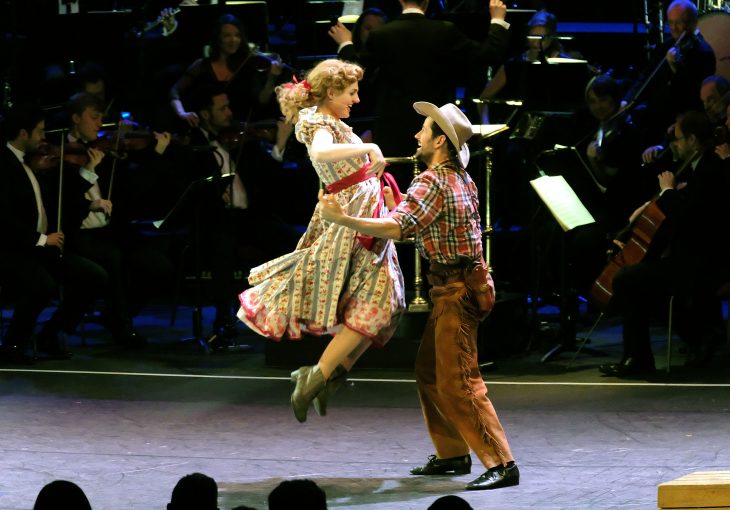Back in the period-instrument wars of the 1980s and ’90s, when the forces of historically informed performance smashed out of their baroque beachhead and started to annex romantic repertoire, the insurgents split into two factions. Roger Norrington and the London Classical Players were the shock troops: their Berlioz Symphonie Fantastique, with its filthy, rasping ophicleide, exploded like a tactical nuke. John Eliot Gardiner and his Orchestre Révolutionnaire et Romantique went in later as peacekeepers, altogether smoother and more reassuring. Norrington’s discs started arguments; Gardiner’s won awards. As an A-level music student drunk on the hot-blooded idealism of Berlioz’s Memoirs, I was certain which one the composer would have preferred.
Well, maybe that’s not exactly how it was, but it’s how I remember it, and I’ve never wholly shaken that teenage prejudice against ‘Jiggy’, as one of those jumped-up choirmasters who Norman Lebrecht brilliantly called ‘semiconductors’. Which is why this performance of Berlioz’s 1846 ‘dramatic legend’ The Damnation of Faust came as a more pleasant surprise than perhaps it should have done. Not so much its elegance — that comes as standard with Gardiner, and he did a sympathetic job of accompanying Michael Spyres’s sweet, guileless Faust and Ann Hallenberg, a Marguerite who radiated innocence. Gardiner gave them the space that Berlioz’s long, unpredictable melodies need; the results, in numbers like Marguerite’s romance ‘D’amour l’ardente flamme’, were like chamber music.
But you don’t really go to The Damnation of Faust for intimacy; at least, not in the Royal Albert Hall. The piece is a fabulous mess. It needs to teeter on the brink of outrage, not always a Gardiner speciality (at least not on the podium), although his Mephistopheles — a sulphurously droll Laurent Naouri — walked the line with panache. The same goes for the Monteverdi Choir, here beefed up by the Trinity Boys Choir and the National Youth Choir of Scotland. ‘Now you’ll see true bestiality,’ says Mephistopheles as Berlioz launches into a parody of a baroque fugue for no reason other than to stick it to the pedants. As Naouri (in character) cheerfully jollied them along, the men’s chorus snarled, bawled and spat out this deliciously spiteful piss-take of the very music to which the Bach-loving Gardiner has devoted much of his career.
Meanwhile Berlioz’s supersized orchestra blazed out in all its deranged brilliance. The six harps glinted, the tinny 19th-century cymbals jangled like bin-lids and the massed violins popped their pizzicatos like bubblewrap. ‘His orchestration is such a mess that one ought to wash one’s hands after hand-ling one of his scores,’ wrote Felix Mendelssohn, ever the priggish head prefect to Berlioz’s class rebel. Good news: Gardiner got his hands properly dirty.
Three days later, the John Wilson Orchestra presented a semi-staging of Rodgers and Hammerstein’s Oklahoma! — by any unprejudiced standard, a more perfect and enduringly influential work of art than poor old Berlioz’s amateur-hour extravaganza. I say ‘semi-staging’: most subsidised theatres in the UK would have called this a full production, complete with costumes, props and exuberant choreography by Alistair David that, if it wasn’t an exact reconstruction of Agnes de Mille’s original (the programme book didn’t say), certainly felt like it captured the freewheeling vigour that astonished the first audiences of this definitive Broadway Gesamtkunstwerk.
A pitch-perfect, all-dancing cast was energetically directed by Rachel Kavanaugh; Lizzy Connolly (Ado Annie) and Robert Fairchild (Will Parker) made hay with the physical comedy, and David Seadon-Young mixed suppressed menace with pathos as Hammerstein’s Peter Grimes figure Jud Fry. The earthy, up-front humour of Hammerstein’s spoken dialogue was another reminder of just how remote this wartime masterpiece is from simple escapism; unfortunately, the amplification — doubtless necessary in the RAH — meant it wasn’t always clear, at least from the stalls.
Visible behind it all was Wilson and a slimmed-down JWO — only marginally larger than demanded by Robert Russell Bennett’s strikingly subtle original theatre orchestrations (the scoring includes oboe d’amore, banjo and harp). You could see Wilson grinning and his players swaying and smiling in response; no orchestra swings like the JWO, or plays with such rhythmic sparkle and snap. But equally, no conductor appreciates the importance of an orchestration’s inner voices like Wilson, or is more adept at caressing a countermelody without letting it get in the way.
In presenting Oklahoma! complete with all its interludes, ballet sequences and (often poetic) underscoring, and performing it with such idiomatic freshness, Wilson is doing pioneering work as vital as Norrington and Gardiner’s a generation ago. The whole evening was suffused with the warmth and wonder of that moment in 1943 when Rodgers and Bennett put a scaled-down symphony orchestra in a Broadway pit and created a new art form. Rodgers hoped that audiences would notice the difference and ask ‘What is that lovely sound the orchestra makes?’ Sometimes the answer’s standing in front of you.






Comments